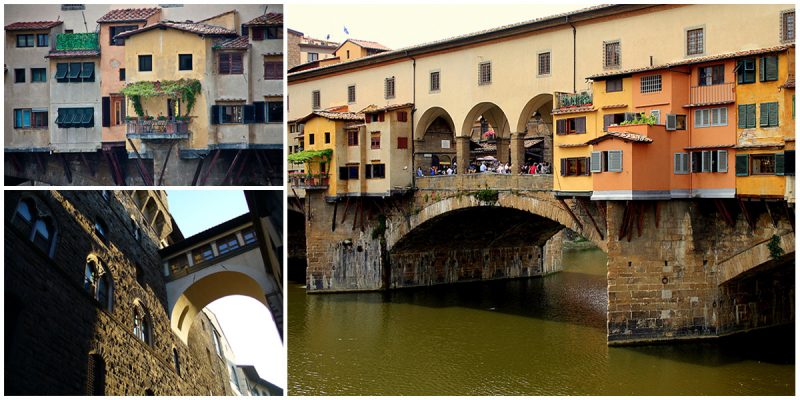Built very close to the Roman crossing, the Ponte Vecchio, or Old Bridge, is a Medieval stone closed-spandrel segmental arch bridge over the Arno River, in Florence, Italy.
It is the oldest bridge in the city, originally built in wood on piers of stone and one of the few remaining bridges with houses built upon.
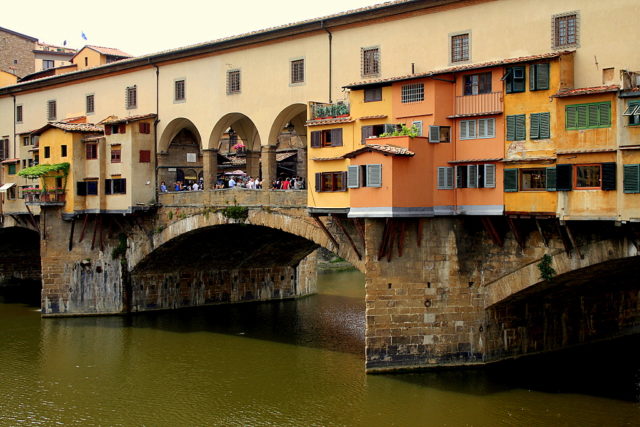
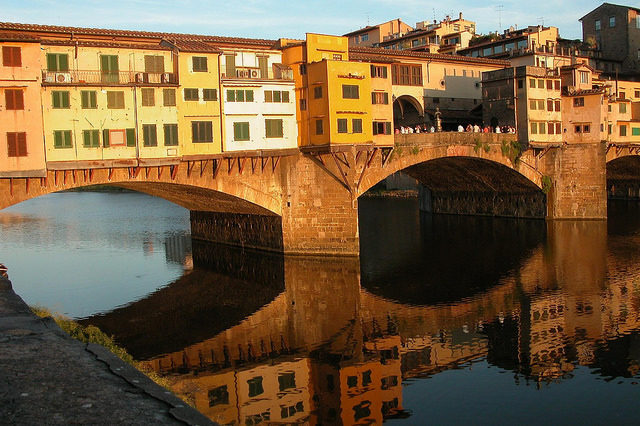
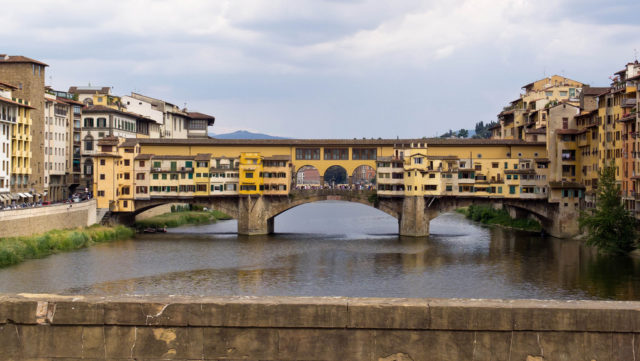
The current bridge was finished by 1350, built after a catastrophic flood in 1333 carried away its predecessor. Who built the bridge remains a mystery; the most frequently cited is Taddeo Gaddi, a painter who was Giotto’s godson.
Another name that has been suggested is that of Neri di Fioravanti. No matter whose work it was, Ponte Vecchio represented an astounding technical feat for its time.
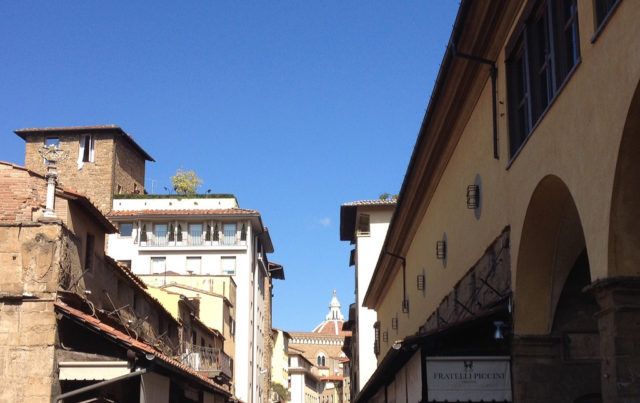
Due to the enormous amount of pedestrian traffic that crossed over the bridge, the more enterprising merchants decided to set up shops on the bridge itself. The first merchants consisted primarily of blacksmiths, butchers, and tanners catering mostly to traveling soldiers.
But in 1593 duke Ferdinand I decided to allow only goldsmiths and jewelers to hold shops on Ponte Vecchio because former tenants produced too much garbage and foul smells.
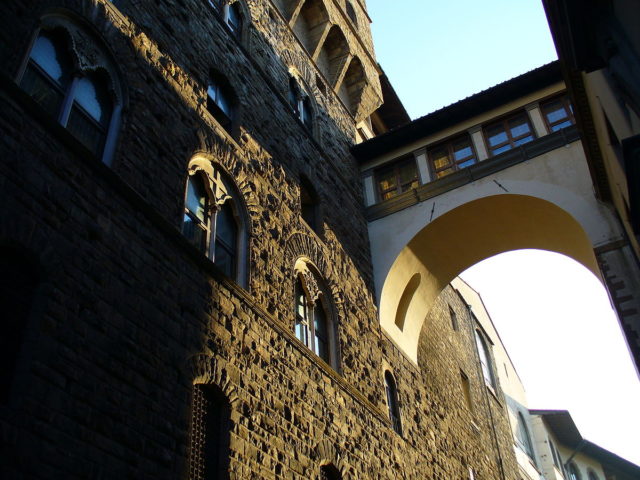
Above one side runs the Vasari Corridor, built in 1565 by Grand Duke Cosimo de’ Medici to connect Palazzo Vecchio, the seat of city government, to the Medici residence at Palazzo Pitti across the river, so that he would not need to walk across the always crowded bridge while commuting between his residences.
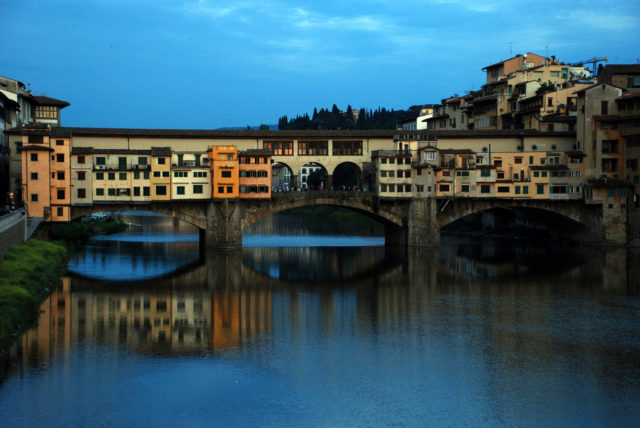
During World War II, the Ponte Vecchio was not destroyed by Germans during their retreat in the face of the advancing British 8th Army on August the 4th, 1944, unlike all other bridges in Florence. Instead, they blocked access by demolishing the medieval buildings on each side.
This was, according to many locals and tour guides, because Hitler liked it.
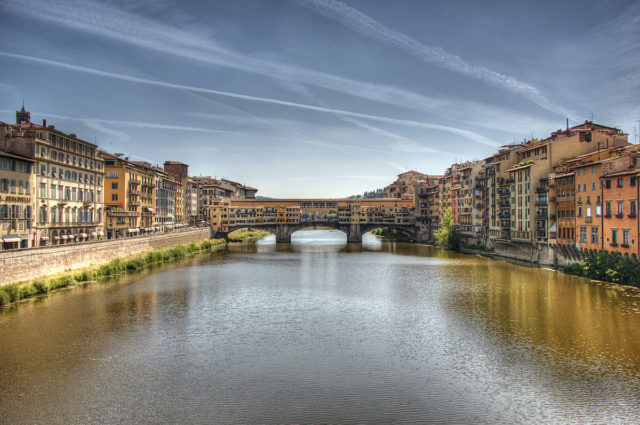
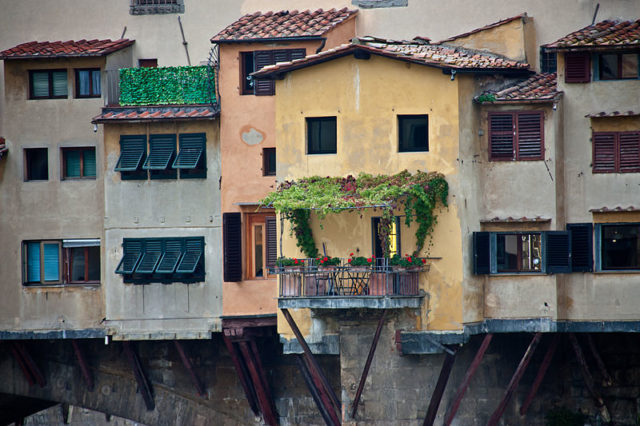
The bridge was severely damaged in November 1966 when a catastrophic flood hit the city. There were real fears the bridge would collapse. The flood wiped out the shops on the bridge, but its roaring waters were not enough to defeat the strength of the bridge itself.
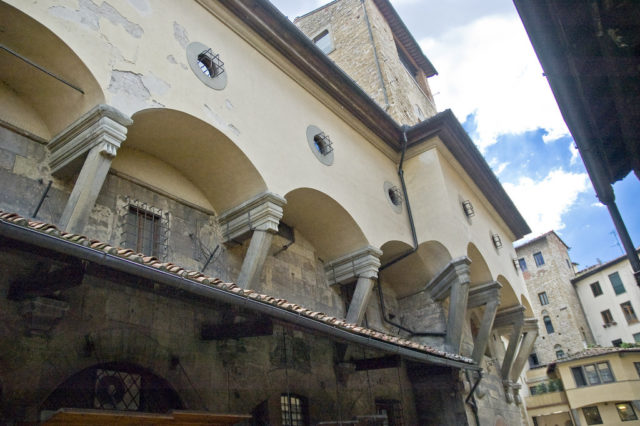
Today the houses are used as shops selling a wide assortment of jewelry, ranging from affordable modern jewels to pricey antiques. In recent history, a tradition appeared that if lovers attach a padlock somewhere on the Ponte Vecchio and then throw away the key in water, their love will last forever. It was perhaps introduced by the padlock shop owner at the end of the bridge.
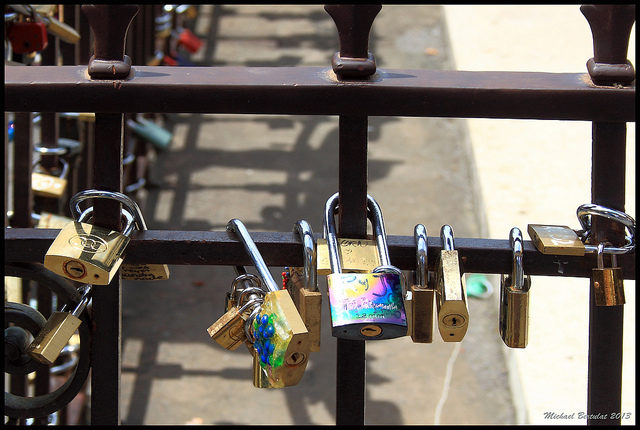
There can be seen many padlocks affixed in various places, especially to the railing around the statue of Benvenuto Cellini. In time, the large number of padlocks began to damage the structure of a bridge with their weight, so thousands of padlocks needed to be removed and the government decided to enact a law that placed a penalty of 50€ on anyone caught locking anything to the bridge.
